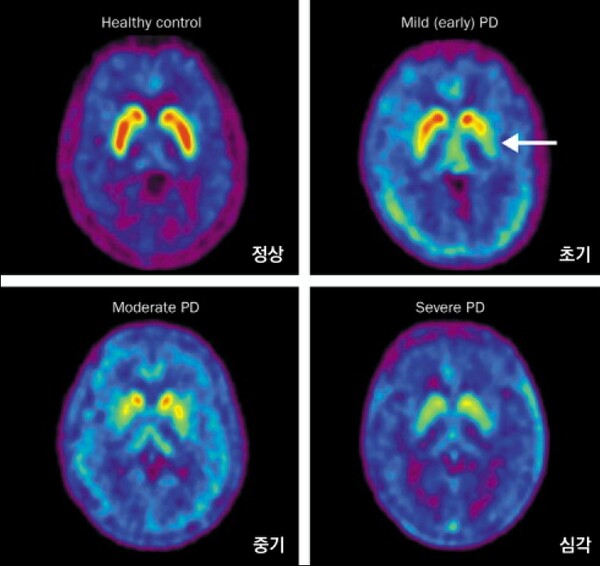April 11 is observed as World Parkinson's Day to commemorate the first scientific publication on Parkinson's disease by British physician James Parkinson in 1817, which coincided with his birthday. The day serves to raise awareness about Parkinson's disease and support those living with the condition.
Parkinson's disease is a neurological disorder that results from the degeneration of dopamine-producing neurons in the brain, leading to a reduction in dopamine levels. Dopamine is a neurotransmitter that helps regulate both movement and emotions, so its decrease can cause symptoms such as lethargy and depression, as well as motor symptoms like tremors, stiffness in the body, unstable gait or posture, and slowed movements.
Parkinson’s on the rise
A recent study based on health insurance treatment data from 2016 to 2020 by the National Health Insurance Service (NHIS) has shown that the prevalence of Parkinson's disease has increased by 15 percent over the past five years. The number of patients rose from 96,764 in 2016 to 111,312 in 2020.
Among the age groups, those in their 70s accounted for the largest percentage at 37.9 percent (42,172 people) in 2020, followed by those aged 80 or older at 36.5 percent (40,603 people) and those in their 60s at 18.7 percent (20,819 people).
Because Parkinson's disease is more common among the elderly and its symptoms progress slowly, they are often mistaken for normal aging symptoms, resulting in delayed diagnosis and treatment.
Symptoms
Typical symptoms of Parkinson's disease include slowed body movements (bradykinesia), tremors (tremor) in parts of the body such as the hands and feet, and stiffness of muscles and joints (rigidity).
However, in addition to these motor symptoms, there are also neuropsychiatric symptoms such as depression and anxiety, cognitive decline, and non-motor symptoms such as sleep or urination disorders, which are often mistaken for normal aging or depression and may delay early diagnosis. It is important to seek medical attention if any of these symptoms are noticed in order to receive an accurate diagnosis and appropriate treatment.
Cause
Parkinson's disease is believed to be caused by a deficiency of dopamine, a neurotransmitter in the brain that plays a crucial role in controlling body movement. Dopamine acts as a lubricant that helps the body move smoothly and precisely. When dopamine levels are low, movement becomes slow and stiff, like a machine that lacks lubrication.
Parkinson's disease is a chronic condition that requires ongoing management, as there is currently no cure. The disease is caused by the progressive loss of dopamine-producing nerve cells in the brain, but the exact reason why this occurs is not yet fully understood. Researchers continue to study the disease in order to better understand its underlying causes and develop more effective treatments.
How to diagnose Parkinson’s early

Radiopharmaceuticals such as DuChemBio's FP-CIT and DopaCheck injections can be used to diagnose Parkinson's disease at an early stage to minimize problems. This is because early and consistent rehabilitation can effectively slow down the progression of the disease, such as stiffness and decreased motor skills.
Radiopharmaceuticals are specialized medicines that combine a drug with a radioisotope, and can be used to diagnose brain diseases such as dementia and Parkinson's disease, as well as cancer, by using biomarkers such as body metabolism or specific proteins. These medications are administered intravenously during PET-CT scans, and act as a contrast agent in the body to image changes in the body down to the cellular level.
When diagnosing Parkinson's disease, radiopharmaceuticals such as FP-CIT or DopaCheck are injected to visualize the decrease in dopaminergic cells characteristic of the disease. The patient then undergoes a PET-CT scan to image these changes in the brain.
Radiopharmaceuticals have been found to be the fastest and most accurate diagnosis method available today, as they can detect even the earliest symptoms of the disease.
A DuChemBio official said that with the rapidly aging population, there will likely be an increase in demand for diagnostics that can accurately and quickly detect degenerative diseases such as Parkinson's.
The company aims to steadily supply diagnostic-related medicines to enable early detection and slow down the progression of aging diseases, he added.
Treatment
One of the leading Parkinson's drugs is Lundbeck's Azilect (rasagiline mesylate). Azilect is a product that improves the problem of "drug exhaustion," which is a problem with existing Parkinson's drugs, and helps to reduce the period of drug exhaustion and increase the duration of the drug effect when taken for a long time.
As an initial monotherapy for Parkinson's disease, or as an adjunct to dopamine agonists or levodopa, Azilect can be taken once daily regardless of meals, eliminating the inconvenience of previous therapies that must be taken with food or at the same time each day.
"Slowing the progression of Parkinson's disease requires not only medication, but also regular exercise and dietary adjustments," said an official at Lundbeck.
"People with Parkinson's who have high levels of fatigue should eat green vegetables, nuts, and moderate amounts of protein, and continue to engage in aerobic exercise such as walking, strength training, and stretching."

